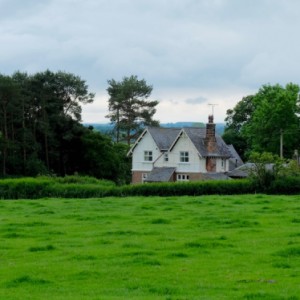You’ll find out
Of course, having found the old Appleby Station yesterday, I had to dodge the showers, and escape the cleaning, today and follow the disused Eden Valley Railway as it made its way towards Penrith. I have often seen evidence of the railway – embankments, bridges etc. – when driving along the A66 or walking the lanes close to home. There was no use looking for the next station, Kirkby Thore, as that was demolished in 1974 when the A66 was realigned and the site is lost under that road.
The next station at Temple Sowerby was easy to find, although we had never realised it was there. It is now a private house, called Station House appropriately enough, and, although we parked outside, we did not fancy walking down the private road to get a closer look. It was another fine station, as can be seen from the photo in extras.
What we were really looking for was how the railway got over the River Eden at Temple Sowerby, as we realised from looking at the map it had to do. We walked along a road from the Station House to Skygarth Farm and asked the farmer there where the footpath to the river was. He showed us and then, when he asked where we were going and I told him our quest, he laughed and said – go over the bridge, turn right and follow the footpath – you’ll find out how the railway crossed the river.
So we crossed the rather nice footbridge over the old railway, which went through a deep cutting at this point. We followed the footpath, although it was just walking through fields really. Gordon stopped to go down to a bridge over the river that he had not known was there and I carried on with the river on one side and the track of the railway on the other, although I could see neither because of the trees and undergrowth. Gradually the track and the river got closer and closer together.
Then suddenly I came upon this – the abutment of a railway bridge. The bridge was actually a viaduct and must have been an impressive thing when it was in use. At first we couldn’t see the other side, but then saw a similar structure through the trees, and realised that the viaduct, which we later found out was metal, went at an angle across the river and was a span of quite a distance. It crossed the river at its confluence with the River Lyvennet, which was possibly one reason for the angle. Such a tremendous amount of engineering went on to create these railway lines. It really makes one think.
Later the same farmer told us that the viaduct was taken down in 1966, four years after the line closed. He knew it was then, as he was at school and he watched as all the metal was taken away for scrap!
Also in the picture is Gordon catching me up and making his way very carefully through the nettles – he had shorts on!


Comments
Sign in or get an account to comment.


